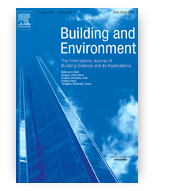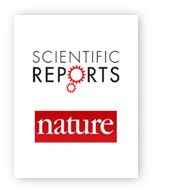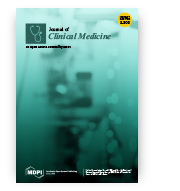Short-term analysis of residential lighting: A pilot study
Rengin Aslanoğlu, Piotr Pracki, Jan Kazak, Begüm Ulusoy, Sepideh Yekanialibeigloua
Building and Environment
 Lighting is one of the environmental elements that facilitates people to maintain their lives. With light people can collect visual cues about their environments in which they can perform visual tasks safely and comfortably. Exploring the lighting systems and conditions in residential interiors is important for introducing new concepts concerning human visual comfort. The study aimed to collect data and conduct a short-term analysis about residential lighting which will be a part of a more comprehensive research. The study focused on day- and artificial lighting systems, conditions and people’s assessments in interiors of residential buildings. An internet-based survey was distributed in July-August 2020 through Google Survey across Poland, Turkey, the U.K. and Sweden in the native languages of each country. 29 adult females and 31 adult males voluntarily participated in the present study. The study identified several interconnected factors related to residential lighting and explored them in detail. Large percentage of the respondents were satisfied or very satisfied with daylighting quality in summer (86.7%) and artificial lighting quality (78.4%) in their living areas. The amount and uniformity of lighting were the most effective cues connected with the respondents’ satisfaction. Reasonable and promising outcomes that were found can be used in generating new and comprehensive data about lighting quality in residential buildings.
Lighting is one of the environmental elements that facilitates people to maintain their lives. With light people can collect visual cues about their environments in which they can perform visual tasks safely and comfortably. Exploring the lighting systems and conditions in residential interiors is important for introducing new concepts concerning human visual comfort. The study aimed to collect data and conduct a short-term analysis about residential lighting which will be a part of a more comprehensive research. The study focused on day- and artificial lighting systems, conditions and people’s assessments in interiors of residential buildings. An internet-based survey was distributed in July-August 2020 through Google Survey across Poland, Turkey, the U.K. and Sweden in the native languages of each country. 29 adult females and 31 adult males voluntarily participated in the present study. The study identified several interconnected factors related to residential lighting and explored them in detail. Large percentage of the respondents were satisfied or very satisfied with daylighting quality in summer (86.7%) and artificial lighting quality (78.4%) in their living areas. The amount and uniformity of lighting were the most effective cues connected with the respondents’ satisfaction. Reasonable and promising outcomes that were found can be used in generating new and comprehensive data about lighting quality in residential buildings.
10.1016/j.buildenv.2021.107781
A 37-amino acid loop in the Yarrowia lipolytica hexokinase impacts its activity and affinity and modulates gene expression
Piotr Hapeta, Patrycja Szczepańska, Cécile Neuvéglise, Zbigniew Lazar
Scientific Reports
 The oleaginous yeast Yarrowia lipolytica is a potent cell factory as it is able to use a wide variety of carbon sources to convert waste materials into value-added products. Nonetheless, there are still gaps in our understanding of its central carbon metabolism. Here we present an in-depth study of Y. lipolytica hexokinase (YlHxk1), a structurally unique protein. The greatest peculiarity of YlHxk1 is a 37-amino acid loop region, a structure not found in any other known hexokinases. By combining bioinformatic and experimental methods we showed that the loop in YlHxk1 is essential for activity of this protein and through that on growth of Y. lipolytica on glucose and fructose. We further proved that the loop in YlHxk1 hinders binding with trehalose 6-phosphate (T6P), a glycolysis inhibitor, as hexokinase with partial deletion of this region is 4.7-fold less sensitive to this molecule. We also found that YlHxk1 devoid of the loop causes strong repressive effect on lipase-encoding genes LIP2 and LIP8 and that the hexokinase overexpression in Y. lipolytica changes glycerol over glucose preference when cultivated in media containing both substrates.
The oleaginous yeast Yarrowia lipolytica is a potent cell factory as it is able to use a wide variety of carbon sources to convert waste materials into value-added products. Nonetheless, there are still gaps in our understanding of its central carbon metabolism. Here we present an in-depth study of Y. lipolytica hexokinase (YlHxk1), a structurally unique protein. The greatest peculiarity of YlHxk1 is a 37-amino acid loop region, a structure not found in any other known hexokinases. By combining bioinformatic and experimental methods we showed that the loop in YlHxk1 is essential for activity of this protein and through that on growth of Y. lipolytica on glucose and fructose. We further proved that the loop in YlHxk1 hinders binding with trehalose 6-phosphate (T6P), a glycolysis inhibitor, as hexokinase with partial deletion of this region is 4.7-fold less sensitive to this molecule. We also found that YlHxk1 devoid of the loop causes strong repressive effect on lipase-encoding genes LIP2 and LIP8 and that the hexokinase overexpression in Y. lipolytica changes glycerol over glucose preference when cultivated in media containing both substrates.
10.1038/s41598-021-85837-8
An analysis of the population of Cryptococcus neoformans strains isolated from animals in Poland, in the years 2015–2019
Magdalena Florek, Urszula Nawrot, Agnieszka Korzeniowska-Kowal, Katarzyna Włodarczyk, Anna Wzorek, Anna Woźniak-Biel, Magdalena Brzozowska, Józef Galli, Anna Bogucka, Jarosław Król
Scientific Reports
 Fungi belonging to the Cryptococcus neoformans/C. gattii species complex (CNGSC) are pathogens causing severe infections in humans and animals, that for humans may result in a mortality rate ranging up to 70%. The CNGSC is divided into eight major molecular types, that may differ in their virulence and susceptibility. In order to fully understand the epidemiology of cryptococcosis, it is important to study the world distribution and population structure of these pathogens. The present study is the first presenting a population of strains isolated in Poland and one of the few using a multi-species animal group as a source of the specimen. The pathogen was present in 2.375% of the tested animals. The URA5-RFLP and MALDI-TOF MS analyses have revealed that the population consisted exclusively of C. neoformans strains, with a predominance of major molecular type VNIV (C. neoformans var. neoformans). The MALDI-TOF MS was used to perform the CNGSC strains identification on both the species and sub-species level. Despite the fact that the animals providing the specimens were not treated with 5-fluorocytosine, around 10% of the tested population presented MIC values exceeding 64 mg/L, indicating the existence of the 5-fluorocytosine-resistant strains in the environment.
Fungi belonging to the Cryptococcus neoformans/C. gattii species complex (CNGSC) are pathogens causing severe infections in humans and animals, that for humans may result in a mortality rate ranging up to 70%. The CNGSC is divided into eight major molecular types, that may differ in their virulence and susceptibility. In order to fully understand the epidemiology of cryptococcosis, it is important to study the world distribution and population structure of these pathogens. The present study is the first presenting a population of strains isolated in Poland and one of the few using a multi-species animal group as a source of the specimen. The pathogen was present in 2.375% of the tested animals. The URA5-RFLP and MALDI-TOF MS analyses have revealed that the population consisted exclusively of C. neoformans strains, with a predominance of major molecular type VNIV (C. neoformans var. neoformans). The MALDI-TOF MS was used to perform the CNGSC strains identification on both the species and sub-species level. Despite the fact that the animals providing the specimens were not treated with 5-fluorocytosine, around 10% of the tested population presented MIC values exceeding 64 mg/L, indicating the existence of the 5-fluorocytosine-resistant strains in the environment.
10.1038/s41598-021-86169-3
Impact of Adjuvant Chemotherapy on Survival of Patients with Advanced Residual Disease at Radical Cystectomy following Neoadjuvant Chemotherapy: Systematic Review and Meta-Analysis
Wojciech Krajewski, Łukasz Nowak, Marco Moschini, Sławomir Poletajew, Joanna Chorbińska, Andrea Necchi, Francesco Montorsi, Alberto Briganti, Rafael Sanchez-Salas, Shahrokh F. Shariat, Juan Palou, Marek Babjuk, Jeremy YC Teoh, Francesco Soria, Benjamin Pradere, Paola Irene Ornaghi, Aleksandra Pawlak, Janusz Dembowski, Romuald Zdrojow
Journal of Clinical Medicine
 Background: Cisplatin-based neoadjuvant chemotherapy (NAC) followed by radical cystectomy (RC) with pelvic lymph-node dissection is the standard treatment for cT2-4a cN0 cM0 muscle-invasive bladder cancer (MIBC). Despite the significant improvement of primary-tumor downstaging with NAC, up to 50% of patients are eventually found to have advanced residual disease (pT3–T4 and/or histopathologically confirmed nodal metastases (pN+)) at RC. Currently, there is no established standard of care in such cases. The aim of this systematic review and meta-analysis was to assess differences in survival rates between patients with pT3–T4 and/or pN+ MIBC who received NAC and surgery followed by adjuvant chemotherapy (AC), and patients without AC. Materials and Methods: A systematic search was conducted in accordance with the PRISMA statement using the Medline, Embase, and Cochrane Library databases. The last search was performed on 12 November 2020. The primary end point was overall survival (OS) and the secondary end point was disease-specific survival (DSS). Results: We identified 2124 articles, of which 6 were selected for qualitative and quantitative analyses. Of a total of 3096 participants in the included articles, 2355 (76.1%) were in the surveillance group and 741 (23.9%) received AC. The use of AC was associated with significantly better OS (hazard ratio (HR) 0.84, 95% confidence interval (CI) 0.75–0.94; p = 0.002) and DSS (HR 0.56, 95% CI 0.32–0.99; p = 0.05). Contrary to the main analysis, in the subgroup analysis including only patients with pN+, AC was not significantly associated with better OS compared to the surveillance group (HR 0.89, 95% CI 0.58–1.35; p = 0.58). Conclusions: The administration of AC in patients with MIBC and pT3–T4 residual disease after NAC might have a positive impact on OS and DSS. However, this may not apply to N+ patients.
Background: Cisplatin-based neoadjuvant chemotherapy (NAC) followed by radical cystectomy (RC) with pelvic lymph-node dissection is the standard treatment for cT2-4a cN0 cM0 muscle-invasive bladder cancer (MIBC). Despite the significant improvement of primary-tumor downstaging with NAC, up to 50% of patients are eventually found to have advanced residual disease (pT3–T4 and/or histopathologically confirmed nodal metastases (pN+)) at RC. Currently, there is no established standard of care in such cases. The aim of this systematic review and meta-analysis was to assess differences in survival rates between patients with pT3–T4 and/or pN+ MIBC who received NAC and surgery followed by adjuvant chemotherapy (AC), and patients without AC. Materials and Methods: A systematic search was conducted in accordance with the PRISMA statement using the Medline, Embase, and Cochrane Library databases. The last search was performed on 12 November 2020. The primary end point was overall survival (OS) and the secondary end point was disease-specific survival (DSS). Results: We identified 2124 articles, of which 6 were selected for qualitative and quantitative analyses. Of a total of 3096 participants in the included articles, 2355 (76.1%) were in the surveillance group and 741 (23.9%) received AC. The use of AC was associated with significantly better OS (hazard ratio (HR) 0.84, 95% confidence interval (CI) 0.75–0.94; p = 0.002) and DSS (HR 0.56, 95% CI 0.32–0.99; p = 0.05). Contrary to the main analysis, in the subgroup analysis including only patients with pN+, AC was not significantly associated with better OS compared to the surveillance group (HR 0.89, 95% CI 0.58–1.35; p = 0.58). Conclusions: The administration of AC in patients with MIBC and pT3–T4 residual disease after NAC might have a positive impact on OS and DSS. However, this may not apply to N+ patients.
10.3390/jcm10040651









